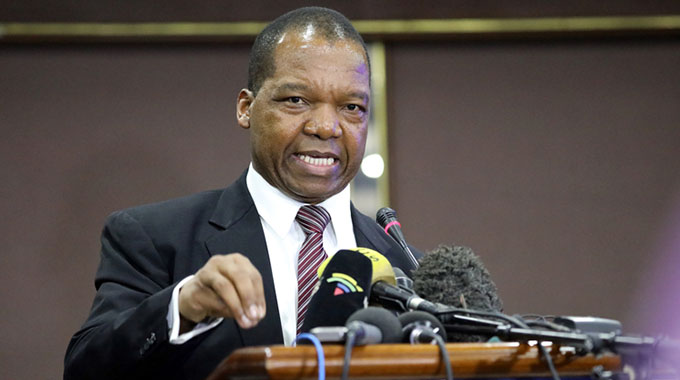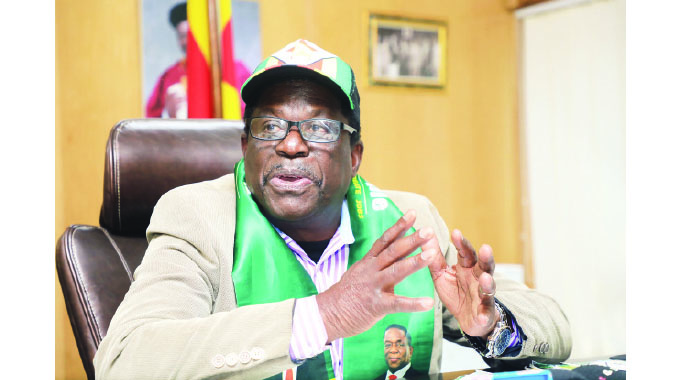Editorial Comment: RBZ attack on the black market laudable

The foreign currency black market has been a growing disruption in the journey to prudent economic reform for more than two years, exerting pressure on the economy and creating alternative exchange rates that are well above what purchasing power parity would expect.
Now the Reserve Bank, with Government support, has launched its most sustained and interesting attack, hitting the system and the pressures rather than just trying to enforce ineffective bans.
This black market is driven by many pressures.
A premium over the interbank rate can be expected because banked export earnings can be sold only to importers, not to those who wish to move capital out of the country and stash it offshore.
That premium in turn makes holders of free funds, and especially of free funds in actual US dollar cash, keen to sell on the black market rather than through bureaux de change or banks. So a lot of diaspora remittances end up being sold on the pavement, and it is now obvious that a well-organised system is in place to agglomerate all those tiny pavement transactions.
The desire of too many Zimbabweans to consume rather than produce for decades ensured that imports ran higher than exports.
The economic, financial and monetary reforms of the Second Republic finally in the last few months of last year reversed that, creating Zimbabwe’s first balance of payments (BOP)surpluses for over a generation.
Cut the culture of the old days, using the black market to fund imports, remained.
A decade of pretending that the US dollars printed by the profligate First Republic to fund huge and unsustainable budget deficits were real US dollars eventually caused what everyone predicted.
The fiscal reforms of the Second Republic prevented a total collapse, and even allowed a resumption of modest economic growth, but the damage had been done.
Fiscal reform was then followed by monetary reform, and in fact was a precondition for the monetary reforms that allowed a managed float of the Zimbabwe dollar.
We stopped pretending, but still had to cope with a decade of pretence.
And that should have been that. We were going to suffer a bout of serious inflation, as a decade of suppressed pressure emerged, but it should have been a one off.
But regrettably two other pressures then emerged. The first was fuelled by that inflation. Many felt that only by buying and holding US dollars could the value of their wealth be preserved, so they moved aggressively into the black market.
The same pressure ensured that the real exporters, the earners of most foreign currency, were reluctant to sell their retained export earnings, instead hoarding them in their nostro accounts. This was rational and legal, but did starve the interbank market.
The other new pressure was a general feeling that the black market rate was the “real rate”, and so many started pricing at that rate, pushing up inflation and generally accentuating the trend to hold loose cash as US dollars.
The last homegrown pressure is the appalling concentration of Zimbabwe dollars in very few hands.
The Reserve Bank of Zimbabwe (RBZ) reckons that about half the Zimbabwe dollars in existence are held by 200 individuals and companies, who instead of investing those dollars into productive assets, like to keep them sloshing around their bank accounts.
This means that a surprisingly few people can dominate the black market.
In the last couple of months, though, the RBZ has launched what can now be seen as an innovative attack on the black market, attacking both supply and demand.
Allowing tobacco farmers to retain half their earnings as free funds, and now paying small-scale miners US$45 a gramme, a little below the world price of around US$55 a gramme, but still more than the black market could pay considering that the gold then had to be smuggled out at high cost, will inevitably pump more US dollars into the black market.
And since most tobacco is grown by small-scale farmers, most of this gold and tobacco money is not going to be hoarded.
These producers need to spend the money to pay local bills and even to buy groceries and the odd beer.
Even the 70 percent retention for large gold miners will feed the interbank market. No mine can operate on just 30 percent of its earnings, and so legitimate importers get a break.
The second prong of the RBZ attack is to make it very hard for those operating in the black market above pavement level to fund deals.
Cheating bureaux de change and other financial institutions near the top of the food chain were first jumped on, and then the mobile money agents, the level above the pavement dealers, were severely restricted or even suspended from business, an action the High Court has now certified as legal.
The double attack, presumably made with enthusiastic support from the Government’s economic policy makers, should at worst stabilise the black market rate, since the ingenuity of Zimbabweans to get around restrictions and make money they do not earn cannot be overestimated.
At best it should see a firming of the Zimbabwe dollar on the black market, that is a fall in that exchange rate.
But either outcome will reduce significantly many of the pressures on the illegal exchange rate, and a fall in that exchange rate could start an accelerating tumble as holders start panic selling.
And it is likely that the Reserve Bank, and for that matter the Ministry of Finance and Economic Development, have a few more arrows in stock to apply extra pressure.
Neither announced what was coming and what we are now seeing, using market forces under tight work.










Comments